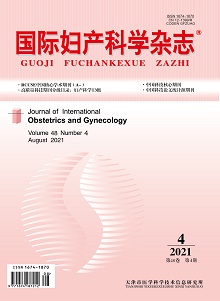Objective: The clinical data of small cell neuroendocrine carcinoma of the cervix were analyzed retrospectively in order to provide the basis for the diagnosis and treatment of this disease. Methods: The clinical data of 59 patients with small cell neuroendocrine carcinoma of the cervix were collected in Guangxi Medical University Affiliated Tumor Hospital, and the prognosis of the patients was followed up. The age of onset, clinical manifestations, human papillomavirus (HPV) typing, pathological diagnosis, postoperative pathology in different clinical stages, treatment plan and survival were statistically analyzed. Results: The median age of onset of the 59 patients was 43.6 years. The main clinical manifestation is irregular vaginal bleeding (53 cases, 89.8%). The positive rate of HPV18 in HPV typing was the highest (48 cases, 81.4%). Immunohistochemical tests showed that 58 cases (98.3%) were positive for Syn, 49 cases (83.1%) were positive for CgA, 58 cases (98.3%) were positive for NSE, and 50 cases (84.7%) were positive for CD56. Thirty-nine patients with clinical stage ⅠB and ⅡA underwent surgical treatment, including 23 patients (59.0%) with deep muscular infiltration, 11 patients (28.2%) with lymph vascular space infiltration (LVSI), and 9 patients (23.1%) with pelvic lymph node metastasis. The cut-off date for follow-up was July 31, 2019. All patients were followed for more than 5 years. Of the 59 patients, 19 survived and 40 died. The mean survival time was 22.6 months, and the median survival time was 20.2 months. Kaplan-Meier Log-Rank test was used for survival analysis. Clinical stage (Log-Rank P=0.000), lymph node metastasis (Log-Rank P=0.015), and depth of tumor invasion (Log-Rank P=0.009) were the prognostic factors. LVSI (Log-Rank P=0.450), neoadjuvant chemotherapy (Log-Rank P=0.856), postoperative adjuvant radiotherapy (Log-Rank P=0.900), TP/TC (paclitaxel or docetaxel + platinum) regimen or EP (etoposide+ cisplatin) regimen (Log-Rank P=0.939) had no significant effect on prognosis. Conclusions: The main clinical manifestation of this disease is irregular vaginal bleeding. The disease is closely related to HPV18 infection. Infiltration and metastasis occurred in early cases. Diagnosis of the disease requires immunohistochemistry. The later the clinical stage, with lymph node metastasis and deep tumor infiltration, the worse the prognosis. Early diagnosis and treatment are the key to improve the curative effect.

